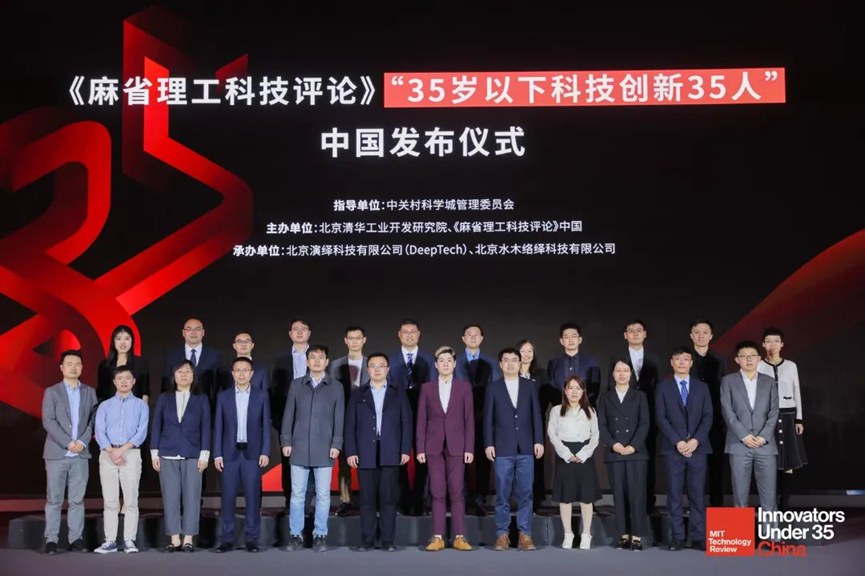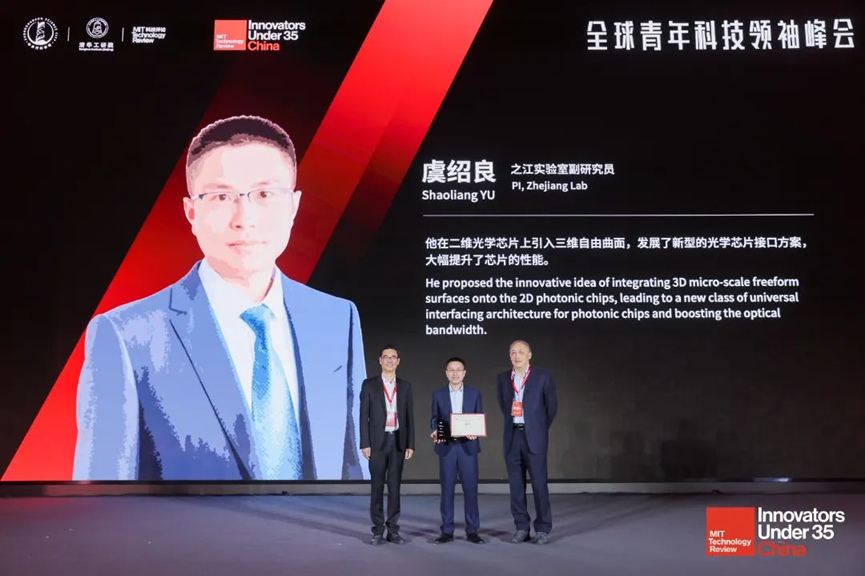


On March 30, 2023, the MIT Technology Review's Innovators Under 35 China (TR35 China) list for 2022 was unveiled at the Global Young Science & Technology Leaders Summit, including YU Shaoliang, a Principal Investigator from Zhejiang Lab.

YU Shaoliang
Age: 32
Position: Principal Investigator of ZJ Lab and Deputy Director of Research Center for Intelligent Optoelectronic Computing
Value: YU Shaoliang proposed the innovative idea of integrating 3D micro-scale freeform surfaces onto the 2D photonic chips, leading to a new class of universal interfacing architecture for photonic chips and boosting the optical bandwidth.
YU Shaoliang proposed a new creative research idea of integrating 3D micro-scale freeform surfaces onto integrated photonic chips toward on-chip wavefront manipulations, which solves the limitation of optical field manipulation caused by the shortage of dimensionality of on-chip traditional two-dimensional periodic structures.
The research was conducted from different aspects such as theoretical model, design approach, and preparation process, which expands the spatial dimension of on-chip optical structure and raises the degree of freedom to manipulate on-chip optical fields. He proposed a new class of universal interfacing architecture for photonic chips to enable ultra-broadband low-loss optical interconnection coupling and construct a waveguide-integrated on-chip optical tweezer system.
Based on the above research, YU Shaoliang integrated a microscale freeform surface coupler on photonic chips, realizing efficient interconnection between optical fibers and chips. The freeform surface coupler measures a low insertion loss of 0.5dB at a bandwidth of over 300nm, which covers wide wavelength-division multiplexing requirements across the O to U bands.
While achieving ultra-low insertion loss, the optical bandwidth is improved by an order of magnitude, and the core indexes reach the best values at present (0.5dB vs. 3dB, 300nm vs. 40nm).
As a class of universal interfacing architecture for photonic chips, this solution is strongly universal and can be used in many optical interconnect scenarios. It can not only realize efficient coupling between optical fibers and photonic chips, but also be used for hybrid integration between photonic chips.
Meanwhile, the co-packaging of optoelectronic and microelectronic chips can be realized based on the solution, and the electronic-photonic integrated chip architecture can be constructed to solve bandwidth and power consumption problems that currently arise from information transmission and processing. The solution has attracted wide attention, and several teams from industrial and academic circles have collaborated in this regard.
YU Shaoliang proposed and realized a new on-chip optical tweezer system to enable the wavefront shaping of multiple light beams emitted from waveguides through a 3D freeform surface integrated on the waveguide end face and realize three-dimensional spatial focusing of waveguide light fields on the chip, thus producing a 3D gradient light field and forming a 3D optical potential well. For the first time, the light-controlled suspension of single and multiple tiny particles is realized on chips, and weak force measurements with sensitivity up to 10-12N are demonstrated.
YU Shaoliang proposed and realized a new on-chip optical tweezer system to enable the wavefront shaping of multiple light beams emitted from waveguides through a 3D freeform surface integrated on the waveguide end face and realize three-dimensional spatial focusing of waveguide light fields on the chip, thus producing a 3D gradient light field and forming a 3D optical potential well. For the first time, the light-controlled suspension of single and multiple tiny particles is realized on chips, and weak force measurements with sensitivity up to 10-12N are demonstrated.

Since 1999, MIT Technology Review annually selects and recognizes a group of leading talents under the age of 35 worldwide for their advancements in emerging technologies and innovative applications, who have demonstrated profound influence on the future development of science and technology, and finally releases a list of global young innovation heroes - "Innovators Under 35" (TR35), including but not limited to biotechnology, energy materials, AI, IT, intelligent manufacturing and other emerging technologies.
After the past five sessions and nearly one year's rigorous review by more than 70 top science and technology leaders around the world, the 2022 TR35 China list was unveiled at the Global Young Science & Technology Leaders Summit on March 30. These 35 young Chinese talents from a variety of fields such as computer, biological and life sciences, chemistry, physics, materials, semiconductors and quantum computing are leading the future of emerging scientific and technological innovations with their intelligence and enthusiasm.











